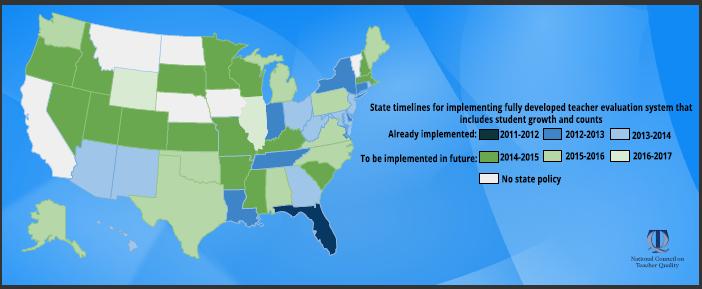With the whirlwind of activity around teacher evaluation over the last five years, it would be easy to conclude that most states now have teacher evaluation systems that include evidence of student learning and that most teachers across the country now face consequences–both positive and negative–based on their ratings from these systems. While there has indeed been tremendous activity at the policy level, the reality is that most states have barely begun to implement these new systems and are years away from consequences.
In fact, to date just 16 states have fully implemented these new evaluation systems with ratings for teachers that count, and most of those are just in the first year of full implementation.
To help provide a clear picture of the teacher evaluation landscape, NCTQ has developed a set of briefs that provide a primer on each state’s evaluation requirements and timeline for implementation. The timelines are much more detailed for some states than for others. In particular, states whose plans come from vague commitments made in an ESEA waiver rather than formal state policy are hard to pin down. We also know that there will continue to be implementation changes and delays; we’ll regularly update the briefs as these changes emerge.
